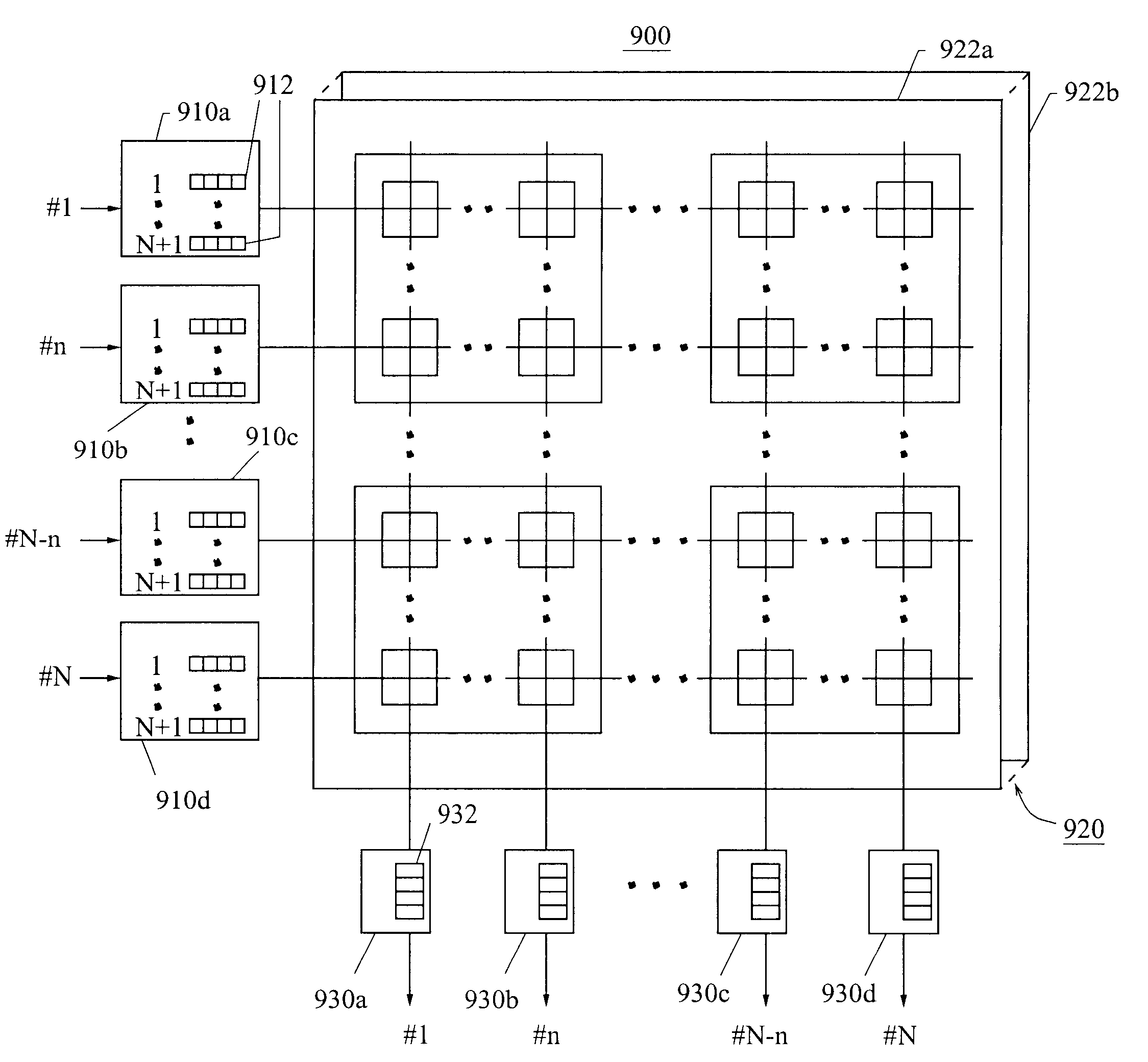Methods and apparatus for providing a fast ring reservation arbitration
a technology of ring reservation and fast ring, which is applied in the field of fast ring reservation arbitration, can solve the problems of general limitation of crossbar chips, and achieve the effects of reducing arbitration time, reasonable implementation and time complexity, and improving the delay performance of bursty traffi
- Summary
- Abstract
- Description
- Claims
- Application Information
AI Technical Summary
Benefits of technology
Problems solved by technology
Method used
Image
Examples
Embodiment Construction
The present invention concerns novel methods and apparatus for arbitrating output port contention in a switch or router. The following description is presented to enable one skilled in the art to make and use the invention, and is provided in the context of particular applications and their requirements. Various modifications to the disclosed embodiments will be apparent to those skilled in the art, and the general principles set forth below may be applied to other embodiments and applications. Thus, the present invention is not intended to be limited to the embodiments shown.
In the following, basic functions which may be performed by the present invention are described in .sctn.4.1. Then, a high level description of an environment in which the present invention may operate is described in .sctn.4.2. Then, methods and apparatus which may be used to effect various aspects of the present invention are described in .sctn.4.3. Then, an example of the operation of a switch which implemen...
PUM
 Login to View More
Login to View More Abstract
Description
Claims
Application Information
 Login to View More
Login to View More - R&D
- Intellectual Property
- Life Sciences
- Materials
- Tech Scout
- Unparalleled Data Quality
- Higher Quality Content
- 60% Fewer Hallucinations
Browse by: Latest US Patents, China's latest patents, Technical Efficacy Thesaurus, Application Domain, Technology Topic, Popular Technical Reports.
© 2025 PatSnap. All rights reserved.Legal|Privacy policy|Modern Slavery Act Transparency Statement|Sitemap|About US| Contact US: help@patsnap.com



